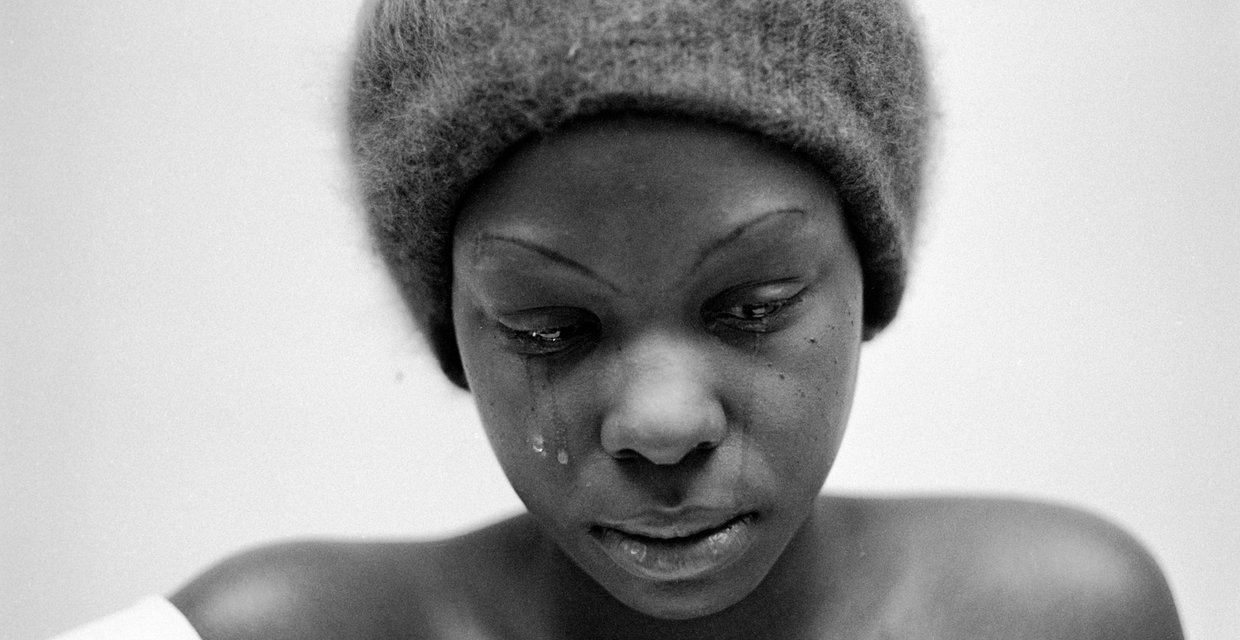Photographer Donna Ferrato spent 30 years capturing glaring evidence of domestic abuse
- By domesticshelters.org
“When you know that someone is being hurt, what do you do? That’s when my life got complicated.” – Donna Ferrato, photographer
Photographer Donna Ferrato set out to capture intimate images of people’s lives. When she was working for LIFE Magazine in the ‘80s, she moved into a couple’s home with the idea of documenting “how love works.” As unabashed swingers, their life was rife with interesting tidbits for Ferrato to capture in pictures. But the first time the husband struck his wife in anger, everything in Ferrato’s world turned on its head.
From that moment on, she began photographing domestic violence—as it occurred and in its aftermath. Her three-decade career of photographs that are, frankly, stomach-churning to look at, became a book, Living With the Enemy, and are now part of a six-part documentary series called Conflict.
After her photographs depicting intimate partner violence began appearing in every major news outlet across the country, Ferrato became an unintentional advocate for battered women, her phone ringing at all hours of the day and night with women asking her for help, many allowing her to photograph their struggles.
To find more subjects, she began living in shelters and camping out in emergency rooms, waiting to speak to the families of victims who came in, or to follow them back home again.
She moved into the homes of abusers to show how, if at all, the husband’s behavior changed after a survivor returned. And they let her, she says, because she took the time to get to know them—both the survivors and the abusers. “I would say, ‘Please, I really want to live in your home and understand how you and your wife are relating. It will help other couples,’” recalls Ferrato.
But what she found was not often good. “We’re living in a home that should be our sanctuary, but it’s like living in a war zone,” she retells in the documentary. “It’s very hard to believe that someone you love could do something like this to you.”
It’s important to note, says Ferrato, “Most of the women I’ve photographed haven’t gone back.”
And that’s why she continued to do the work she did. She knows her photographs hold enormous weight, she says. She would show them to police and to women at shelters to share the truth. “I’ve always wanted to see the truth.”
In the documentary, she warns survivors: “If you don’t get out soon enough, you’re going to have to kill him to get out, or he’s going to kill you.” To illustrate her point, she holds up a black and white photograph of a woman, the victim of domestic abuse who apparently killed her partner after discovering he had sexually abused her child, sitting on a cot in a jail cell.
“I’ve met women who’ve gone to prison for 30 years after killing in self-defense even when she had all the evidence of abuse. But the courts seem determined to punish women who have the audacity to fight back.”
Ferrato does not believe things have gotten better for survivors since she began her work. “I think I have anger and it’s righteous. Our judicial system treats women differently from men. Men get away with abuse and murder.”
She tells the story of a woman, Janice, whom she met at a shelter. Janice and her best friend Kim, also a survivor of abuse, had moved to a new city with their children for a fresh start away from their abusers. One day, at a bus stop, Kim’s husband showed up and stabbed her to death in front of their children and the bus full of people. Ferrato attended the trial and witnessed the judge sentence the man to six to eight years, with the option of parole in just four for good behavior. Although Ferrato says she learned the abuser stole the murder weapon ahead of time, he was given a short sentence for “unpremeditated” murder. To top it off, the abuser then received custody of the children.
Yet, Ferrato says she feels stronger because of the difficult career path she chose.
“I’m not as naïve as I was in the ‘80s. I kind of thought it should be easier for women—if they just got out of the relationship, things would turn around for them. I was educated by all these women in the shelters that that idea was foolish. They told me you don’t get away from them that easily. If they can’t have you, then nobody else will.
Image Credit: (Pictured above) When she thought she had escaped violence, Janice witnessed the murder of her friend, Kim, whose husband killed her at the bus stop. Boulder, CO, 1984. ©Donna Ferrato

